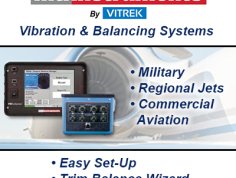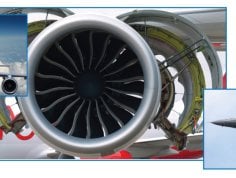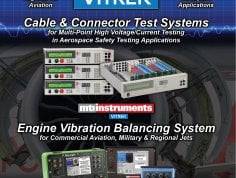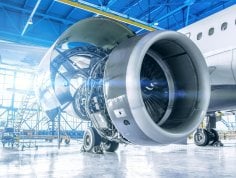Looking for balancing systems? Commercial aviation companies and the U.S. military rely on MTI Instruments’ vibration analysis and engine trim balance solutions to identify any jet engine problems...

This site is operated by a business or businesses owned by Informa PLC and all copyright resides with them. Informa PLC's registered office is 5 Howick Place, London SW1P 1WG. Registered in England and Wales. Number 8860726.
Aviation Week Marketplace is part of the Informa Markets Division of Informa PLC



Save this service to your Saved Items and return to it later.
Prior to the COVID pandemic, the average age of a highly trained aircraft technician was 57. The airline industry, like so many others, reacted to the pandemic by reducing operations and offering early retirement as way of balancing the workforce with demand. Now the airline industry is experiencing unprecedented growth and thanks to the early retirement of senior MRO technicians, the industry is experiencing a shortfall in its population of qualified personnel.
The Problem
Not enough young mechanics are joining the trade. Exacerbating the situation is the extensive training and dated equipment aspiring technicians must contend with before they can join the workforce.
While the number of prospects in the mechanic pipeline needs to grow by at least 20% to meet industry’s needs, national enrollment at Airframe & Powerplant (A&P) schools is only growing at about 2% per year. Supply deficit by 2027 projected at more than 48,000 aircraft maintenance workers – 27% lower than needed. This shortage is based on the projected growth of the aircraft MRO industry. Research projects that the global aircraft fleet will grow from 28,000 to over 38,000 by 2032.
The Solution
MRO tasks are being simplified and streamlined thanks to advancements in computing, the miniaturization of sensors and electronics, and better battery technology, combined with flatscreens and touch-enabled displays. With the loss of experienced, senior-level technicians, having the availability of these high-tech tools to streamline tasks and reduce time and manpower can work to alleviate the technician shortage.
One outstanding example of this trend is the PBS eXpress, an aircraft engine vibration analysis and balancing system from MTI Instruments that runs advanced algorithms to record vibration and speed and generates a one-shot balancing solution for small-frame turbofan and turboprop engines, commonly used in regional business jets and general aviation. The portable, handheld PBS eXpress is based on the same technology as the company’s well-known PBS-4100+ products and adds a modernized touchscreen and other advanced functionality. This includes Balance Wizard technology that significantly streamlines the diagnostic and balancing process. The system’s intuitive user interface enables first-time users to perform vibration analysis and engine rotor balancing, with minimal training. Perhaps even more important, the PBS eXpress enables a single technician to perform the procedure that would otherwise require two techs.
The PBS eXpress is easy to set up. With preconfigured engine parameters, simply connect cables and begin testing. The unit has an intuitive touch-based user interface and guides even first-time users to success in as little as two engine runs.
View this product at vitrek.com/article-solving-the-shortage-of-aviation-technicians-through-product-design
Looking for balancing systems? Commercial aviation companies and the U.S. military rely on MTI Instruments’ vibration analysis and engine trim balance solutions to identify any jet engine problems...

Throughout the aviation industry, whether commercial or military, jet engine vibration is an everyday concern. Maintenance, repair, and overhaul crews worldwide are tasked with monitoring aircraft...

Vitrek is the leader in providing electrical safety testing and compliance testing equipment for a variety of applications in the aerospace, military and defense industries. The addition of MTI...

The 41CA Two Channel Charge Amplifier is used to convert accelerometer charge signals into voltage signals. Converted signals are then easily used by the PBS-4100 family of vibration analyzers. Two...

Jet engine vibration is perhaps the worst enemy of an aircraft maintenance team. Out-of-balance parts can lead to cracked fan, turbine and compressor components; general metal fatigue; and if...
